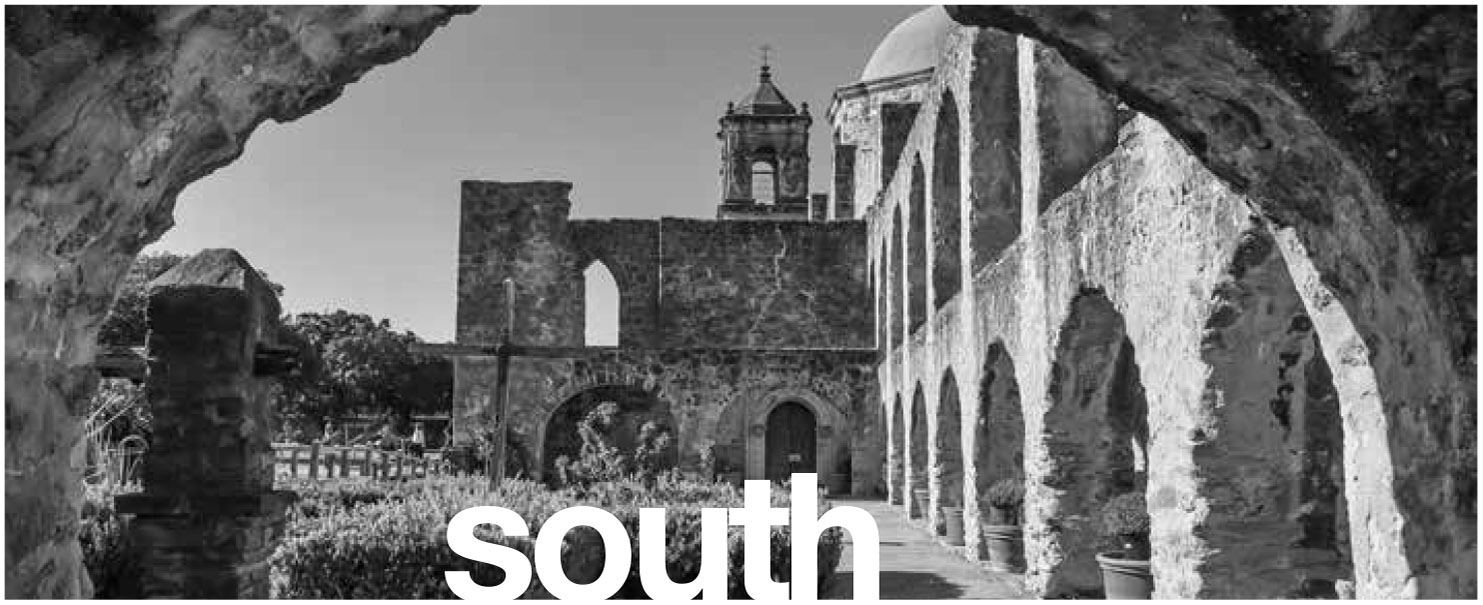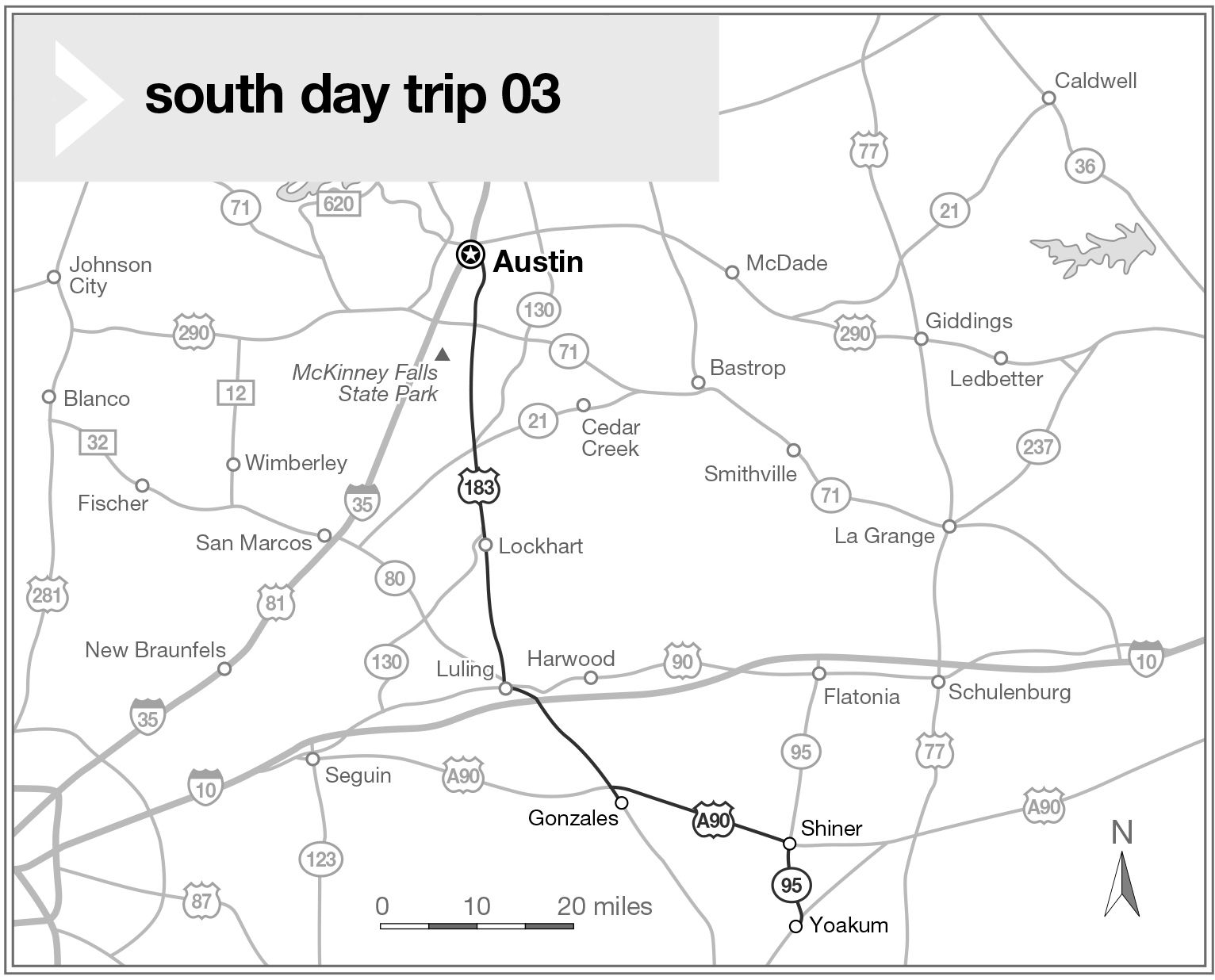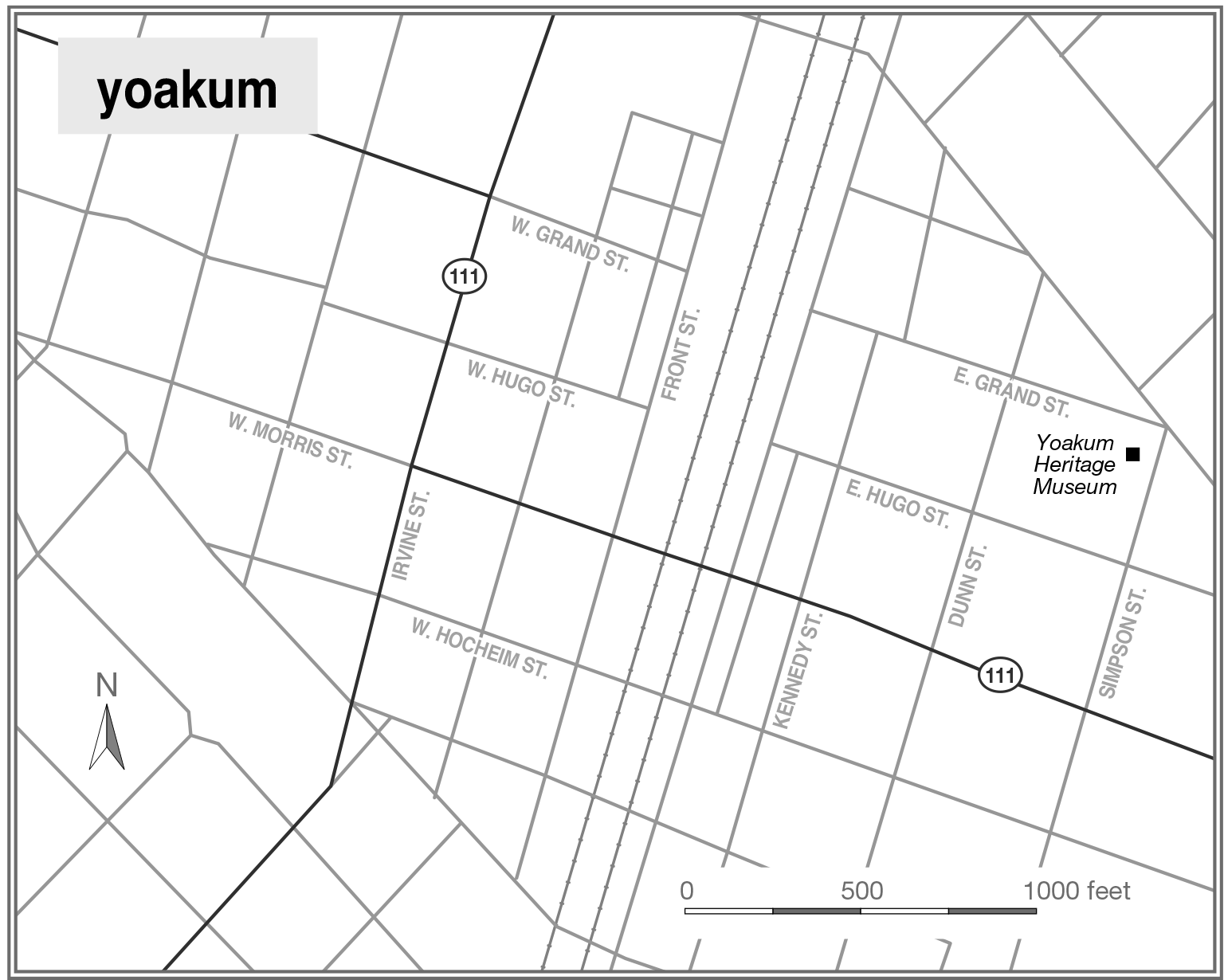

 texas history:
texas history:This history-filled day trip offers a look at a historic battleground, one of Texas’s most popular breweries, and one of the world’s biggest leather producers. To begin this trip, head south on US 183 through Lockhart and Luling (see South Day Trip 01 for information on attractions in those cities).
Continue south on US 183 for 13 miles to Gonzales, one of Texas’s most historic cities. This is the “Come and Take It” town where the Texas Revolution began in 1835.
Plagued by constant attacks by American Indians, Gonzales’s citizens received a small brass cannon for protection sent by the Mexican government in 1831. Four years later, when relations between Texas and Mexico soured, more than 150 Mexican soldiers staged a battle to retrieve the weapon. The soldiers were faced with 18 Gonzaleans, who stalled the army while other citizens rolled out the small fieldpiece and prepared for action. Meanwhile, other townsfolk sewed the first battle flag of Texas, which pictured a cannon beneath the words “Come and Take It,” a motto by which Gonzales is still known. The Texans fired a shot and the Mexican troops retreated. Although the confrontation was brief, it set off the Texas Revolution.
The site of this historic first conflict is marked by a monument located 7 miles southwest of Gonzales on TX 97. The first shots were fired a half mile north of the present monument.

where to go
Gonzales Chamber of Commerce & Agriculture. 414 St. Lawrence St.; (888) 672-1095. Located in the Old Jail Museum, this office has brochures on local attractions and events. Open daily.
Gonzales Memorial Museum. 414 Smith St.; (830) 672-6350; gonzalesmemorialmuseum.com. This museum is dedicated to the history of Gonzales and honors “The Immortal 32,” members of the Gonzales Rangers who died defending the Alamo. Exhibits include the original “Come and Take It” cannon. Open daily. Free admission.
Old Jail Museum. 414 St. Lawrence St.; (830) 263-4663; gonzaleschc.org/gonzales-county-jail-museum.html. This unusual museum is housed in the old Gonzales jail, built in 1887 and used until 1975. Downstairs you can tour the room where female prisoners and mentally ill persons once were incarcerated together. Exhibits include jail weapons created from spoons and bedsprings.
The walls of the second floor are chiseled with graffiti of past residents. The large room is rimmed with iron cells, all overlooking a reproduction of the old gallows that carried off its last hanging in 1921. According to legend, this prisoner continually watched the clocks on the adjacent courthouse, counting the hours he had left to live. He swore that he was innocent and said that if he were hanged, the clocks would never keep accurate time again. Although the four clock faces have been changed since then, none of them has ever kept the same time again. Open Tues through Sat. Free admission.
Pioneer Village Living History Center. 2122 N. St. Joseph St. (0.5 mile north of town on US 183); (830) 672-2157; thepioneervillage.com. This center takes visitors back to Gonzales’s frontier days. The village is composed of log cabins, a cypress-constructed house, a grand Victorian house, a smokehouse, a blacksmith shop, and a church. The village also stages reenactments, including the “Come and Take It” battle reenactment in Oct. Open 1 to 5 p.m. Tues through Sun; group tours by appointment. Fee.
Take US 90A east of Gonzales for 18 miles to the tiny town of Shiner, best known as the home of Shiner Beer. If you make the trip during the week, stop by the Spoetzl Brewery for a free tour and a sample of the hometown product.
where to go
Cigar Factory and Green Cabin Museums. 817 N. Avenue E (Highway 90-A); (361) 594-4180. Two historic buildings grace Shiner’s downtown. The Louis Ehlers Cigar Factory opened in 1895, and their products once enjoyed widespread popularity in the area. The Green Cabin Museum preserves the home of prominent local businessman William Green Jr. The cabin was built in 1853. The Shiner Chamber of Commerce office is next door, offering visitors guides and maps. Open Mon through Wed and Fri. Free admission.
Edwin Wolters Memorial Museum. 306 S. Avenue I (off TX 95 South); (361) 594-3774. This museum is filled with home implements, weapons, fossils, and even a country store representing the community’s early days. Open weekdays and the second and fourth Sun afternoons of the month. Free admission.
The Gaslight Theatre. 207 E. Seventh St.; (361) 594-2079; shinergaslight.org. Shiner’s Gaslight Theatre’s graceful facade has been a downtown landmark since 1895 and was the town’s social center for many years. Now restored and modernized, it hosts amateur stage productions several times a year. Call for information on group tours, which are available by appointment.
Spoetzl Brewery. 603 E. Brewery St. (off TX 95 North); (361) 594-3852; shiner.com. This tiny but historic brewery was founded in 1909 by Kosmos Spoetzl, a Bavarian brewmaster. Here several Shiner beers are produced in one of the smallest commercial brew kettles in the country and the oldest independent brewery in Texas. Across the street a museum and gift shop overflow with Shiner memorabilia, antiques, and photos of Spoetzl’s early days. Brewery tours are conducted on weekdays at 11 a.m. and 1:30 p.m., with additional tours at 10 a.m. and 2:30 p.m. during the summer. Hospitality room open following tour. Free admission.
Welhausen Park. 901 N. Avenue E (Highway 90-A); (361) 594-3362. This park occupies a full city block just west of downtown. Beneath its large shade trees you’ll see an old-time bandstand, children’s playscape, and several granite markers each commemorating historic events in the city’s past. It’s a good spot for a picnic. Free admission.
where to stay
The Old Kasper House Victorian Inn. 219 Avenue C; (361) 594-4336; oldkasperhouse.com. This bed-and-breakfast is located in the former home of a cotton ginner and his wife from eastern Europe who was best known as a relative of Gregor Mendel, discoverer of genetic information (remember those Mendel pea models in Biology I?). Today the two-story house is a great small-town getaway, offering five rooms with private baths as well as several separate cottages on the property. $–$$.

From Shiner drive south on TX 95 for 8 miles to US 77A. Turn right and continue for 2 miles. Yoakum was the starting point of many cattle drives along the Chisholm Trail, and in 1887 it became the junction for the San Antonio and Aransas Pass Railroad. When the railroad came to town, meatpacking houses followed.
In 1919 the first tannery opened, producing leather knee pads for cotton pickers. Soon other leather businesses arrived, and eventually Yoakum earned its title as “Leather Capital of the World.” Today many of these leather manufacturers sell primarily to distributors and through online catalogs, such as Double J Saddlery, doublejsaddlery.com.
where to go
Yoakum Heritage Museum. 312 Simpson St.; (361) 293-7022. This two-story Victorian home dates from the early 1900s and is filled with Yoakum memorabilia, from railroad paraphernalia to household items. The most interesting exhibit area is the Leather Room, with its displays on the town’s leather industry and featuring ornate handmade saddles. Open afternoons on Sun, Tues, and Thurs and 10 a.m. to 4 p.m. on Fri. Free admission.
Return home from Yoakum by retracing your steps or by heading north on TX 95 to Flatonia. From here go west on either I-10 or US 90.